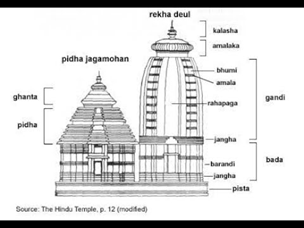

7th April 2022 (8 Topics)
Context
The Central government has told the Odisha government that its ordinance to bring the 11th-century Lingaraj temple in Bhubaneswar and its associated temples under a special law is outside the legislative competence of the state legislature.
About
Lingaraj Temple Ordinance, 2020:
- In December 2019, the Odisha Government had announced a development plan for the temple and its peripheral area in Bhubaneshwar.
- The 66-acre “Ekamra Kshetra” development plan was launched to preserve the heritage and development of the nine sites and their nearby areas at a cost of around Rs 700 crore.
- The first phase of the project includes outer access road development, Lingaraj entry plaza, Bindusagar revival plan, parking space, heritage complex, development of amenities for Kedar Gouri- Mukteswar complex, e-auto project, relocation project and a state-of-the-art interpretation centre.
- The Lingaraj Temple Ordinance of 2020 was introduced to manage the rituals and other activities of the temple and eight other associated temples.
- This was intended to be on similar lines of the special Act which manages the affairs of the Jagannath temple in Puri, one of the four dhams in India.
- At present, the Lingaraj temple is being governed under the Odisha Hindu Religious Endowment Act.
- The ordinance proposed the formation of Lingaraj Temple Managing Committee with a full-time administrator looking after day-to-day affairs of the shrine.
- Under the Act, a fund creation was proposed to deposit income derived from immovable and movable properties of the temple.
- The temple has around 1,500 acres in various parts of the state and the land in most of the places is under encroachment.
Why has the Centre opposed the ordinance?
- The Ministry of Home Affairs has said several sections of the proposed ordinance were in conflict with the Ancient Monuments and Archaeological Sites and Remains (AMASR) Act.
- The AMASR Act provides for preservation of ancient and historical monuments and archaeological sites and remains of national importance.
- The ministry contended that since the ordinance covers 12 centrally protected monuments including the Lingaraj temple and three tanks, it was outside the legislative competence of the state legislature as it violates the provisions of AMASR Act, 1958.
- The ordinance also provides for repair and construction of new buildings while the centre contended that constructions can only be allowed by the National Monuments Authority.
About Lingaraj Temple
- It is an ancient temple dedicated to Lord Shiva, situated in the city of Bhubaneswar.
- The temple was built in the 7th century by the King JajatiKeshari.
- Lingaraj is referred to as “Swayambhu” i.e. self-originated Shivling.
- The temple marks the culmination of the temple architecture in Bhubaneswar which was the cradle of the Kalinga School of Temple Architecture.
- The temple can broadly be divided into four main halls i.e.
- GarbaGriha (Sanctum Sanctorum),
- YajanaMandapa(the hall for prayers)’
- NatyaMandapa (dance and music hall) and
- BhogaMandapa (where devotees can have the Prasad (offering) of the Lord).
- It signifies the syncretisation of Shaivism and Vaishnavism sectsin Odisha.
- Bhubaneswar is called the EkamraKshetra as the deity of Lingaraja was originally under a mango tree (Ekamra) as noted in EkamraPurana, a 13th-century Sanskrit treatise.
- Bindusagar is the sacred pond near the temple which is the second most attractive place after the temple.
- Bindusagar is considered as the union of drops of water from various sacred rivers of India.




